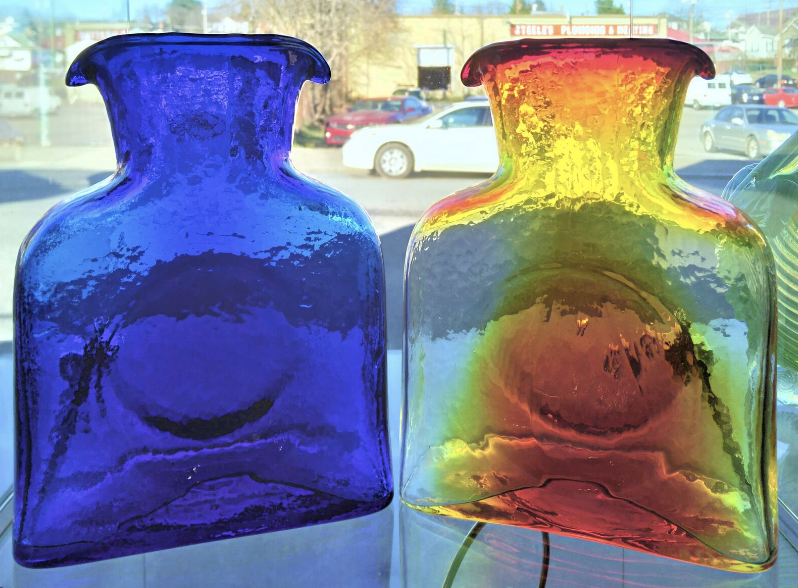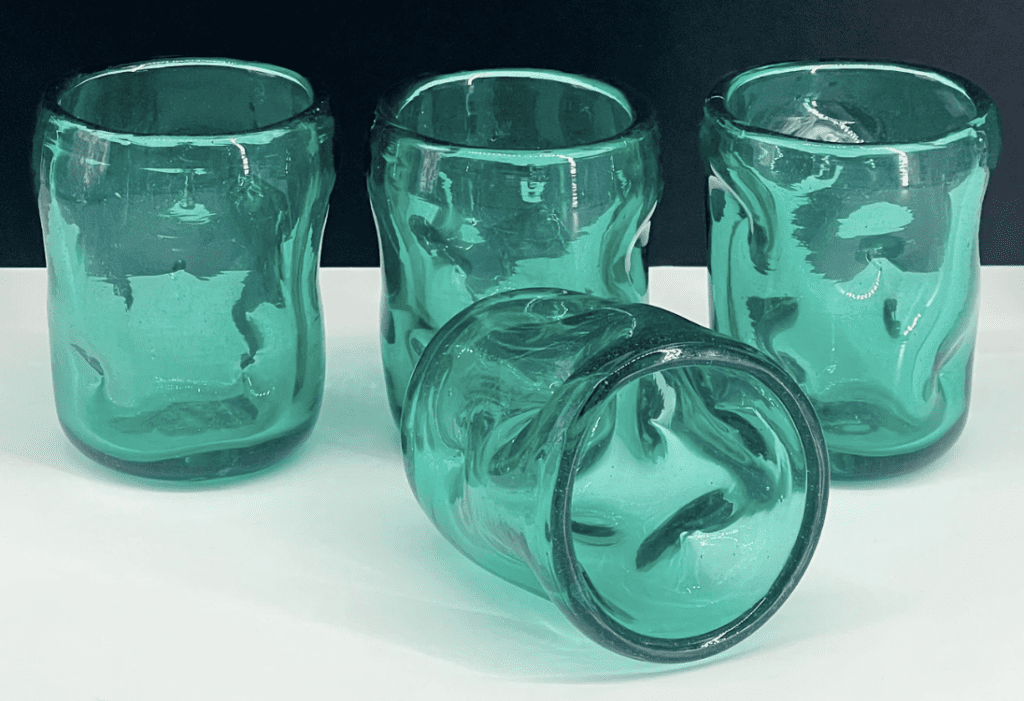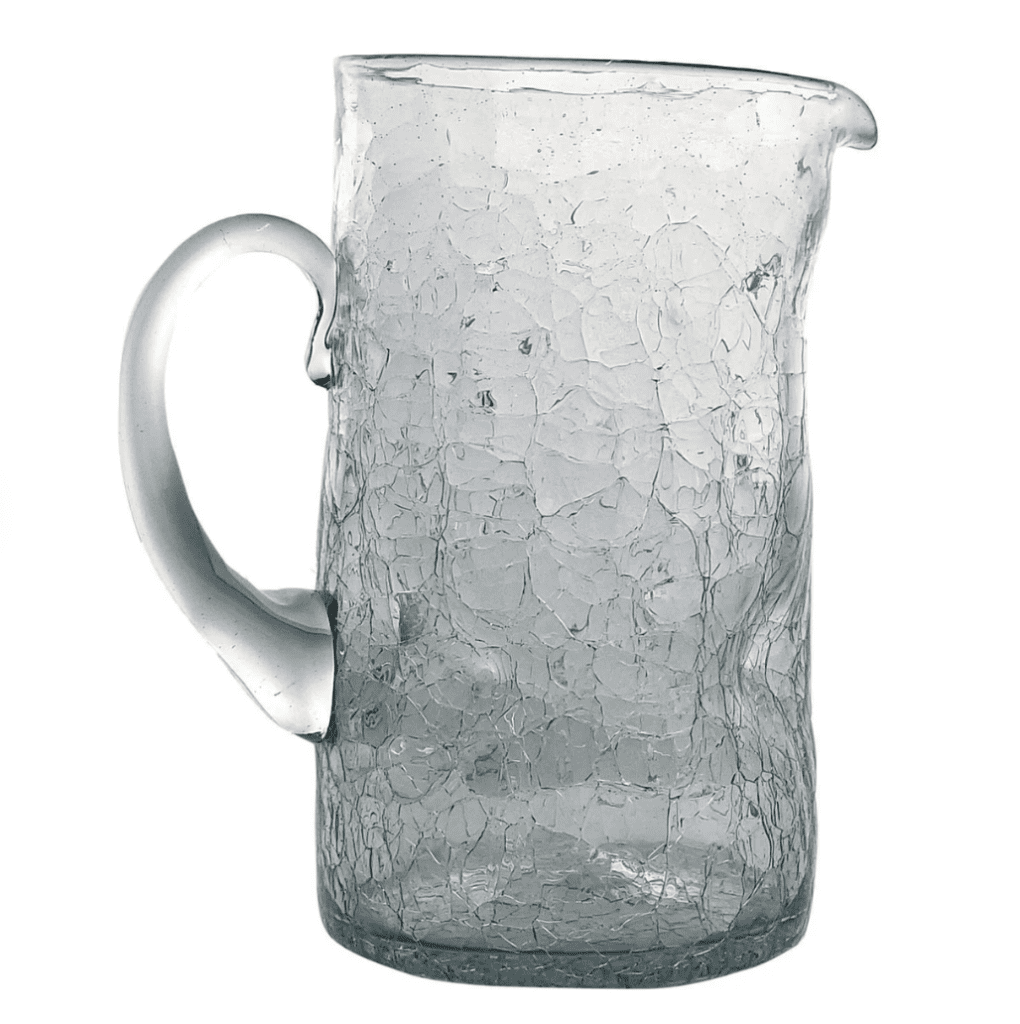While Blenko glass pieces have distinctive features, they can be among the most difficult to identify. Other glass producers have attempted to replicate Blenko’s designs, but learning about key features of Blenko glass can help you identify fake pieces. We will cover the basics of Blenko glass identification so you can feel confident in your search for authentic Blenko glass.
True Blenko glass will have the following: a sticker or sandblasted signature (some exceptions); tooling marks and no mold lines; rough pontil mark; thick, smooth rounded rim; translucent body. Blenko glass can also be identified using information from Blenko’s website, by reading antiques books or collectibles websites, or by consulting with an antiques expert.
In this article, we’ll cover what to look for when identifying an authentic Blenko piece and provide information about identifying fakes.

How Do I Identify Blenko Glass?
While not all authentic pieces have all of the traits listed here, many of them will. Keep in mind that there are some very well-made dupes, but using these guidelines will help you to distinguish the real pieces from those that are fakes.
- First, look for Blenko’s signature mark or label. The “hand logo” sticker is most commonly used in Blenko pieces. The Blenko Collectors website features a visual guide of the various logo stickers used by Blenko throughout their history, including examples of rare and experimental stickers and stamps. The majority of Blenko pieces are not marked. However, some later pieces use sandblasted identification marks on the base of pieces. Also, some pieces are marked with a sandblasted signature of the artist or of the current Blenko president.
- You’ll find that certain production line pieces or time periods used different identification labels. See the Blenko Collectors website for more details. For example, the product line sold at Neiman Marcus in the mid to late 1990s was vastly different from the well-known logo labels that Blenko uses to identify their glass.
- Look for other identification such as “tooling marks, bubbles and striations” (Source). This indicates that a piece is hand-blown glass.
- There should be an absence of mold lines because Blenko’s glassblowing method involves constant rotation of a piece in a wooden mold that results in smooth glass with no mold lines.
- Look for a rough mark on the base of the piece. This is called a pontil mark created from the rod placed on the bottom of the glass after the shaping process is complete. The pontil mark is not polished and can feel rough or sharp on a Blenko piece.

- Most Blenko pieces have a thick rim of at least ¼ inch thick.
- Use this color guide from Blenko Collectors website to check color samples. Blenko produces a variety of distinct colors that are unique only to Blenko glass, such as their signature ruby red color. If you are unsure about color identification, see Blenko’s annual catalogs for more information.
- Blenko glass is always transparent. Check this feature by holding your piece up to a light source. Look for opaqueness or translucency: Blenko glass will have neither feature (unless Rialto Specialty Line which will have a translucent body).
- Look for a rounded, smooth rim. Blenko rims undergo a fire-polished process: the rims are reinserted into the fire for a short amount of time which creates a smooth, rounded rim that may be slightly uneven.
After going through this checklist, compare your piece with those in Blenko’s annual catalogs. The catalogs date from the 1950s even though Blenko began producing catalogs in the 1930s. Identifying pieces prior to the 1950s may be a bit challenging. These catalogs can help you find the production date of your piece and introduce you to similar or complementary pieces.

Due to production issues from the Covid-19 pandemic, a catalog for 2021 was not published. However, a 2020 catalog is available for viewing. You may be able to find catalogs prior to the 1950s at online retailers available for purchase and be sure to check holdings at library or museum archives. If you’re still not confident about identifying your Blenko piece, consult with antiques experts who are familiar with the identification of Blenko glass.
Did Blenko Made Crackle Glass?
Crackle glass isn’t created by a particular company or from any specific period (Source). From the 1930’s to 1960’s, Blenko was one of five major producers of crackle glass.

Crackle glass is actually a finish that is added to glass to give it a “cracked” texture. Some Blenko designs give the collector the option of choosing plain or crackle finish on a made-to-order piece. Crackle glass is created when a piece is immersed in cold water while hot. The sudden change in temperature causes the glass to crack slightly. Then, the glass is heated once more to strengthen and smooth, leaving the crackling lines in the piece permanently.
Blenko still continues to make crackle glass, typically larger pieces such as decanters and vases. These pieces will also have pontil marks and have the same features as other pieces: smooth, opaque, and transparent (not translucent) glass (Source).
Identifying Fake Blenko Pieces
Fake Blenko pieces can be identified using the following criteria. However, do keep in mind that some features, such as a missing label, may not be a sole indication of a fake piece.
- Missing label or sandblasted signature: most Blenko pieces will have a logo label of some kind and will have a particular look depending on the age of the piece. Later pieces produced in the mid to late 1990s and 2000s will have a sandblasted permanent signature on the bottom. If there is no label on a piece and no sandblasted signature, review the criteria on identifying an authentic piece of Blenko glass. A label may have fallen off over time due to the age of a piece, or someone has mistakenly removed the label from the piece. Collectors prefer to keep the Blenko labelling on a piece as there are typically no other identification markings.
- Lack of rough or pointed pontil: Blenko pontils will have a slight roughness to them. They will not be completely smooth as found on inauthentic pieces.
- Lack of transparency: Remember, transparent but not translucent is an authentic Blenko piece. You will only be able to see transparency when the piece is held up to a light source. Blenko glass will also never be opaque (unless from the Rialto Specialty line which has a translucent body). Although Blenko colors are rich and vibrant, they will always have a transparent quality.
- No mold lines: because of the unique manufacturing process of Blenko glass, there will not be any mold lines even though wooden molds are used in production. Distinct lines on any glass piece being marketed as Blenko is always a fake.
- No markers of hand-blown glass: look for tooling marks, some bubbling, and ridges in the piece. Since the pieces are hand-made using centuries old hand-blown techniques, there will be some imperfections in every piece of Blenko (some more apparent than others). The fake pieces will not have any of these markers.
- Absence of thick, rounded rim: most Blenko pieces have a thick rim of at least ¼ inch as seen in their vase and water bottle pieces. The rim should be smooth and rounded.
- Distinct colors: Blenko glass colors are truly unique, specifically their ruby red color that was innovative during the time it was created. View a Blenko color guide for comparison (link in above paragraphs).
Remember that at times it can be extremely difficult to identify a fake piece from a true Blenko piece. Some great examples of glass comparisons can be found at the Blenko Collectors website. See if you can spot the differences, some are very subtle!
Check out our valuation guide to see how much Blenko glass is worth.

